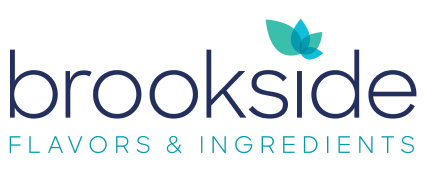Flavor Compounds: The Secret Handshake of Good Taste
Let’s get one thing straight: food isn’t just food.
It’s molecular magic.
It’s memory.
It’s mood.
It’s the thing that can hit you with nostalgia or make a Tuesday taste like a fever dream in the best way. And now more than ever, it’s strategy.
Because in this era of clean labels, ingredient transparency, and TikTok-fueled ingredient audits, flavor isn’t just about tasting good—it’s about standing for something.
Enter: flavor compounds.
Flavor compounds are naturally occurring molecules that make a ripe peach taste like July and a grilled ribeye light up every savory receptor in your brain. They’re the reason your mouth waters, your memory fires, and your customer comes back for more.
Understand them, and you don’t just make food that tastes better—you make food that works harder. Flavor compounds are how you craft products that connect—with regulators, retailers, and real people.
Taste, Trust & the Clean-Label Shift
Consumers today don’t just want flavor—they want receipts. They want to know why something tastes the way it does, where it came from, and whether it’s going to show up on someone’s no-no list. (Hi, Food Babe.)
That scrutiny has pushed flavor into new territory: part emotional experience, part compliance checklist. State and federal regulations are tightening, and ingredients like diacetyl—once a shortcut to buttery indulgence—are now being flagged for everything from potential health concerns to occupational hazards in production.
Flavor’s no longer just a chef’s playground. It’s a high-stakes space where formulation meets expectation, and flavor compounds are how you play it smart. That’s why forward-thinking brands are reformulating—not just to protect the taste, but to protect the trust.
Flavor Compounds 101: A Quick Hit on the MVPs
If you want to build flavor that lasts—on shelves, in mouths, in memory—you need to know your compound players. These are the molecules behind the magic:
TERPENES: THE AROMA ENGINE THAT HITS FIRST
These bring the citrusy, piney, herbaceous high notes. Found in lemon zest, basil, hops, and yes, cannabis. If your food hits you in the nose before the fork hits your lips, terpenes are running the show.
PYRAZINES: THE FLAVOR OF FIRE
The toast, the roast, the crunch around the edges. Pyrazines bring the deep, savory, Maillard-reaction goodness you get from searing meat, roasting nuts, or baking bread a few minutes past golden.
ESTERS: THE REASON FRUIT TASTES LIKE FRUIT
Esters are behind that burst of banana, that punch of pineapple, that sweet spot where ripe and juicy meet. Without them, fruit falls flat. With them, it sings.
ALDEHYDES: THE QUIET BACKBONE
Vanilla. Cinnamon. Green apple. Aldehydes add the clean, warm, often floral Aldehydes add the clean, warm, often floral and slightly waxy notes… notes that tie everything together. They’re subtle, but without them, the whole thing collapses.
Flavor 101: The Session That Tastes as Good as It Teaches
So what do you actually do with all this flavor compound knowledge?
You build better flavor systems—ones that hit hard on taste and go easy on the label.
That’s why we offer Flavor 101. It’s our no-fluff, full-flavor session where you taste, learn, and build alongside our team. We bring the real food, the real insights, and the real-world tools to help you:
- Replace flagged ingredients without losing flavor
- Deliver bold, craveable sensory experiences
- Align with the clean-label standards today’s consumers expect
- Stay ahead of regulation before it becomes a reformulation emergency
You’ll walk away with: - How to reformulate without losing the soul of your product
- How to identify flavor compounds that win with regulators and real people
- How to say more with less—less label clutter, less risk, more impact
Whether you’re innovating something new, renovating a classic, or just trying to make
your next launch slap a little harder—Flavor 101 is your blueprint.
Flavor Compounds: Your Questions Answered
What exactly are flavor compounds?
They’re naturally occurring (and sometimes naturally inspired) molecules that give food
its taste and aroma. They’re the foundation of every flavor you love—and the reason it
lingers.
Are natural flavor compounds better than artificial ones?
Depends who you ask. Consumers definitely lean natural—and clean-label innovation
makes it easier than ever to deliver bold, craveable taste from real sources. But ask a
flavorist? You might get a raised eyebrow and a “define better.” (We’ll save that fight for
a different blog.)
How do scientists identify flavor compounds?
Using gas chromatography-mass spectrometry (GC-MS)—think of it as a high-tech
flavor decoder ring. It breaks down a food’s aroma into individual compounds so you
can replicate or remove with precision.
Can flavor compounds offer health benefits?
Yes. Many of them are multitaskers—like gingerol (anti-inflammatory), menthol
(digestive aid), and cinnamaldehyde (antioxidant). Functional and flavorful? Absolutely.
Let’s Make It Delicious
Flavor compounds are more than molecules—they’re the magic behind what makes a
product unforgettable, compliant, and culturally relevant.
If you’re ready to dig deeper, Flavor 101 is your starting point.
We‘ll bring the bites. You bring the bold ideas.
Depends who you ask. Consumers definitely lean natural—and clean-label innovation makes it
easier than ever to deliver bold, craveable taste from real sources.
But ask a flavorist?
You might get a raised eyebrow and a “define better.” (We’ll save that fight for a different blog.)
Here at Brookside we’re Flavor Compound Experts – Click here to find out how we can make your flavor idea a reality.

